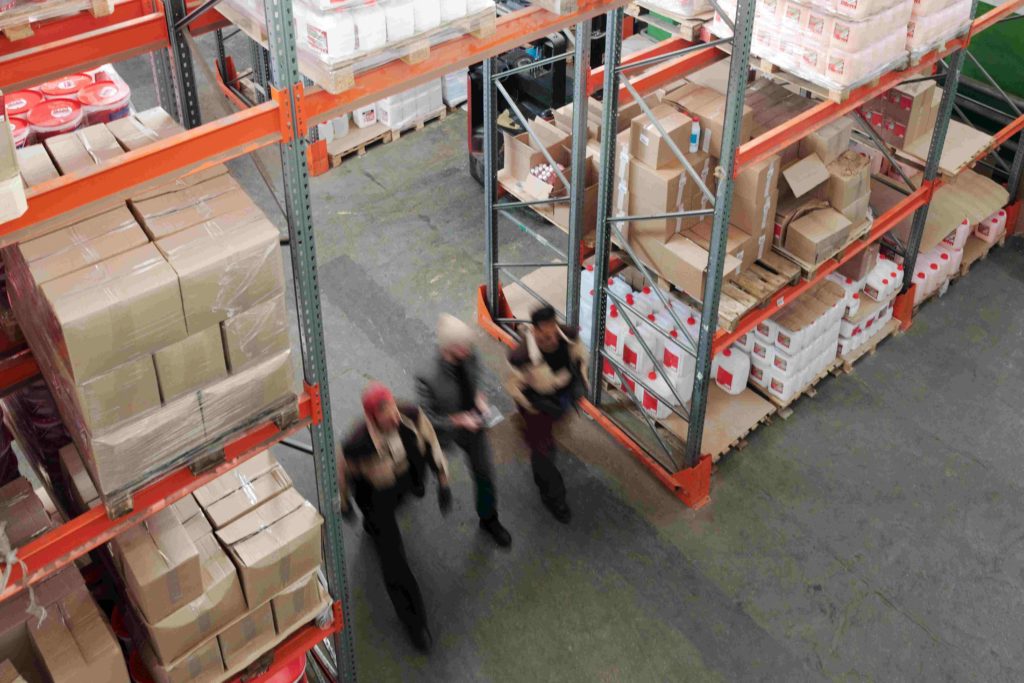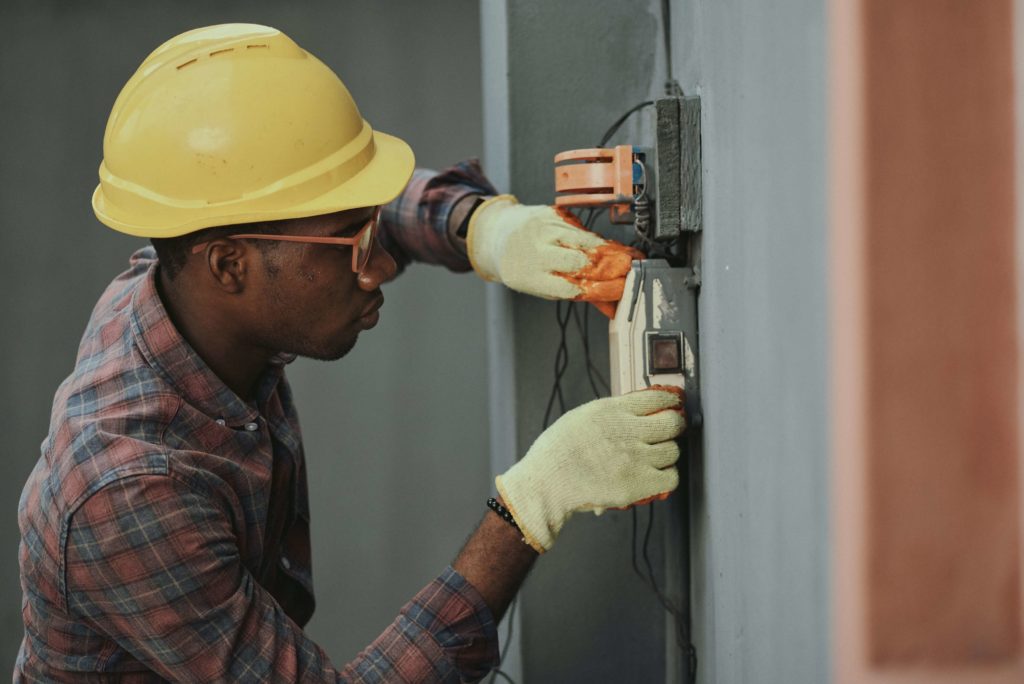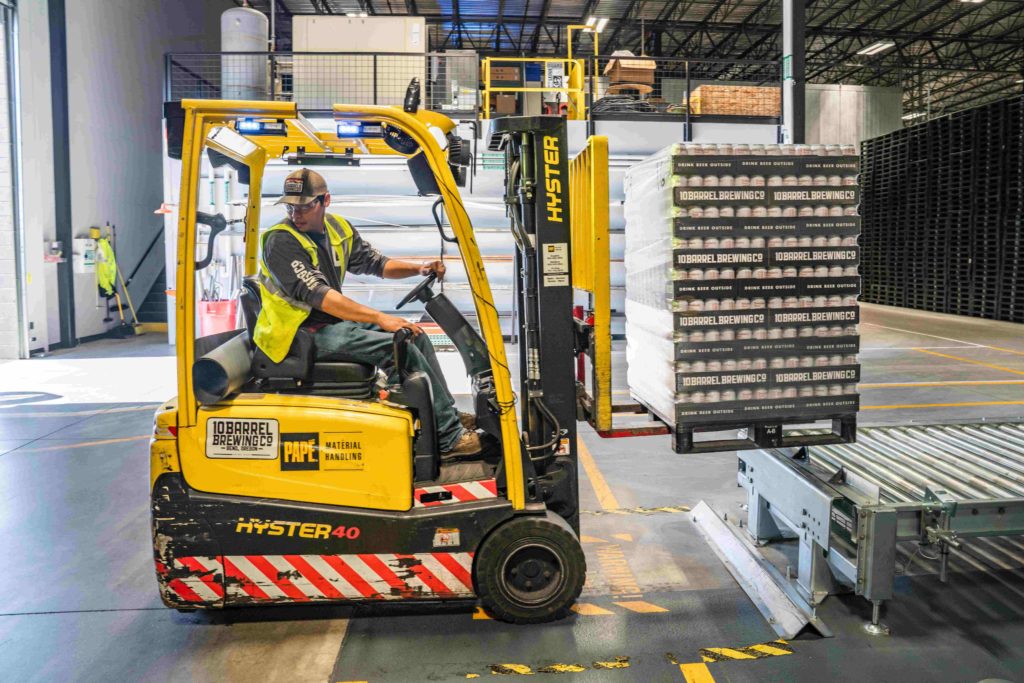PPE Distributor: Solutions for Efficient Distribution

In various professional environments, the safety and well-being of workers take a prominent role. PPE distributors play a crucial role by providing quick and easy access to necessary protective equipment. Regardless of the industry, these devices are designed to streamline workplace safety management.
- What is a PPE dispenser?
- PPE Dispenser: Different Types
- PPE Dispenser: Benefits
- How to Choose Your PPE Dispenser?
- PPE Dispenser: Maintenance and Care
What is a PPE Dispenser?
A Personal Protective Equipment (PPE) dispenser is designed to provide and distribute safety and protective equipment to workers. PPE is essential gear that prevents occupational risks and safeguards the health and safety of employees.
The PPE dispenser is responsible for selecting, storing, and distributing a wide range of PPE. This includes safety helmets, protective eyewear, gloves, safety shoes, respiratory masks, and more. These equipment are crucial to minimize risks associated with specific activities, such as:
-
- accidents,
- injuries,
- occupational illnesses,
- or exposure to hazardous substances.
Isolated worker protection equipment must be carefully chosen to ensure maximum safety.
PPE Dispenser: Different Types
Automatic
An automatic PPE dispenser is an electronic device that facilitates the automated distribution of individual protective equipment to workers. It operates autonomously through electronic mechanisms. It is commonly installed in workplaces where providing quick and easy access to PPE is essential, such as factories, warehouses, hospitals, or distribution centers. The operation of the automatic PPE dispenser relies on sensors, detection systems, and computer-controlled release mechanisms. Users can select the desired PPE through a touch screen or numeric keypad, and the dispenser delivers it automatically. Some models can also integrate features for stock tracking, supply notifications, or report generation.
Manual
A manual PPE dispenser is a device used to controlledly distribute PPE to workers. It requires physical intervention from the user to dispense the equipment. It provides the same equipment as an automatic PPE dispenser, with differing operational methods. The operation of the manual PPE dispenser may vary depending on the model. Generally, it includes individual compartments containing PPE, along with a release or distribution mechanism. Users must manually activate the mechanism, such as a lever or crank, to dispense the desired PPE.
PPE Dispenser: Advantages
PPE dispensers, whether manual or automatic, offer several significant advantages for employers and workers. Here’s a list of the advantages of both types of dispensers:
Advantages of a manual PPE dispenser:
- Distribution Control: The manual PPE dispenser enables direct control over equipment distribution. This helps prevent abuse and wastage. Managers can personally oversee the issuance of PPE to ensure that each worker receives only what they truly need. This prevents excess and inappropriate usage.
- Accessibility: Manual PPE dispensers are typically strategically placed, providing easy and quick access to PPE when workers need it. Positioned near work areas or key stations, these dispensers ensure that protective equipment is readily accessible. This reduces waiting times and enables workers to protect themselves swiftly.

- Stock Monitoring: With direct visibility of storage compartments, it’s easy to monitor inventory levels of PPE and replenish dispensers accordingly. Managers can quickly identify empty compartments and restock them, preventing situations where workers are left without necessary equipment. This visibility also aids in purchase planning and stock management.
- Affordable Cost: Manual PPE dispensers are often more cost-effective to purchase and install compared to automatic dispensers. This can be beneficial for small businesses or limited budgets.
- Adaptability: Manual PPE dispensers can be installed in various work environments, whether construction sites, industrial workshops, or offices, providing a versatile solution. They can be configured to meet the specific needs of each site, offering compartments suitable for different types of PPE used in each professional context.
- User-Friendly: Manual dispensers are generally simple to use, requiring minimal complex training for workers. They are intuitive and provide quick access to PPE—often a simple turn of a handle or push of a button is enough to retrieve the necessary equipment. This simplicity promotes rapid adoption by workers and minimizes usage errors.
- Simplified Maintenance: Manual PPE dispensers usually require less maintenance than automatic ones, as they lack complex electronic mechanisms. Routine maintenance operations such as cleaning and compartment reloading are simpler, reducing downtime and maintenance costs.
- Flexible Placement: Manual dispensers can be easily moved or rearranged based on workspace needs, offering flexibility in setup. Accessibility During Power Outages: In case of power failure, manual PPE dispensers continue to function normally, ensuring access to personal protective equipment.
Advantages of an Automatic PPE Dispenser:
- Automated Distribution: Automatic PPE dispensers provide rapid and automated distribution of personal protective equipment, reducing wait times for workers. This ensures workers have quick access to necessary PPE, enhancing their safety and productivity in the workplace.
- Optimized Stock Management: Automatic dispensers often come equipped with inventory tracking systems, maintaining accurate inventory and generating reports to facilitate PPE management. This information is crucial for future purchase planning, avoiding shortages or excess PPE. Additionally, these systems can generate detailed reports on PPE usage, aiding stock management and optimization.
- Access Control: Some automatic PPE dispensers integrate access control systems, restricting access to PPE only to authorized workers, enhancing compliance and safety. By using identification cards, these dispensers ensure that only qualified employees can obtain appropriate equipment. This strengthens compliance with safety regulations and limits improper PPE use.
- Safety Awareness: Automatic PPE dispensers contribute to promoting a safety culture by highlighting the importance of proper PPE use and making them readily available to workers. When workers see that equipment is easily accessible and available at all times, they are more encouraged to use them correctly. This enhances safety awareness and reduces the risk of workplace accidents or injuries.

- Usage Tracking: Automatic PPE dispensers can record and track the usage of PPE by workers. This provides valuable data for equipment management, identifying specific employee needs, usage frequencies, and the most requested types of PPE. This information helps better plan future purchases and ensure that workers always have the equipment they need.
- Authorization Management: Automatic dispensers allow control of access authorizations to PPE based on roles, certifications, or other specific criteria, reinforcing security and compliance. This ensures that only qualified and authorized workers can obtain appropriate equipment. By enhancing security and compliance, these systems reduce the risks of accidents and injuries caused by incorrect or inadequate use of PPE.
- Time Savings: With automated distribution, workers can quickly access PPE without manually searching for the appropriate items. This saves valuable time, as employees can quickly retrieve the equipment they need and get back to work more promptly. This increased efficiency also contributes to overall workplace productivity improvement.
- Cost Tracking: Automatic dispensers can provide detailed information about distributed PPE, facilitating cost tracking related to personal protection and assisting with budget optimization.
- Prevention of Shortages: Automatic PPE dispensers can automatically alert managers when inventory levels are low, thus avoiding potential shortages of PPE and ensuring consistent availability for workers.
How to Choose Your PPE Dispenser?
When it comes to choosing between an automatic or manual PPE dispenser for a business, several factors need to be considered. The unique advantages of each are necessary but not sufficient information. Here are more tips to assist you:
Carefully analyze your company’s specific needs regarding PPE distribution. Consider the number of employees, types of PPE used, and how frequently they are required. A larger company with a substantial number of employees might benefit from an automatic dispenser for rapid and efficient distribution.
Take into account the environment in which the PPE dispenser will be installed. Automatic dispensers might be more suitable in environments where speed and accessibility are crucial, such as factories or construction sites. Manual dispensers might be more appropriate in office environments or smaller workplaces.

Weigh the available resources within your company, including budget, maintenance, and training. Automatic dispensers are generally more costly to purchase and maintain, also requiring technical expertise for upkeep. Manual dispensers can be more cost-effective and easier to maintain.
If traceability of distributed PPE and compliance with regulations are priorities for your company, an automatic dispenser can offer features such as stock tracking, usage reports, and access control, facilitating PPE management and documentation.
Contact PPE dispenser suppliers and request detailed information about features, costs, and specific benefits of each dispenser type. They can advise you based on your needs and provide personalized recommendations.
PPE Dispenser: Maintenance and Care
Managing the maintenance and care of both manual and automatic PPE dispensers is crucial to ensure their proper function and user safety.
Create a detailed maintenance plan that outlines tasks to be performed regularly and the frequency at which they should occur. This will help you follow a consistent schedule and not overlook important maintenance operations.
Regularly inspect PPE dispensers for any signs of damage, wear, or malfunction. Check distribution mechanisms, storage reservoirs, locking systems, and any other critical components to ensure safe and reliable operation.
Clean PPE dispensers regularly to remove dust, dirt, and contaminants. Use appropriate cleaning products and follow the manufacturer’s guidelines. Also, ensure surfaces in contact with hands are disinfected to maintain optimal sanitary conditions.
Continuously monitor PPE supply levels and ensure that dispensers are always well-stocked. Set up a tracking system to be alerted when levels are low so you can replenish dispensers in a timely manner.
If issues are detected during inspections or users report malfunctions, it’s important to take immediate action. Organize an internal repair process or enlist the help of specialized external services to address technical problems. If a dispenser is damaged beyond repair, ensure prompt replacement to avoid interruptions in PPE supply.
Ensure users are properly trained on the correct use of PPE dispensers and basic maintenance procedures. Explain how to report potential issues and make sure they understand the importance of keeping dispensers in good working condition.
Maintain detailed records of all maintenance operations performed, including inspections, repairs, replacements, and restocking. This will help track dispenser history and identify recurring trends or issues.
